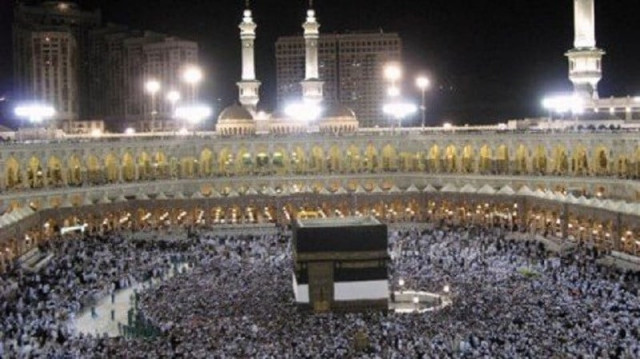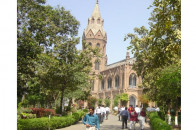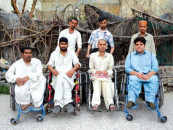Economics of Hajj, Qurbani
Impact of activities, revenues earned during Hajj and Qurbani can be well over $230b

Hajj – the holy pilgrimage of Makkah – is the fifth pillar of the Islamic faith and it also marks the occasion of Eid of Sacrifice where millions of Muslims around the world sacrifice animals and distribute its meat to the deserving and
needy in addition to their family members and neighbours.
However, one is amazed when we look at the economic impact and stimulus that Hajj and Qurbani generate every
year across the world with the creation of thousands of jobs, increased economic activities, and transfer of wealth to rural and agricultural economies.
According to some expert estimates, the economic impact of activities and revenues earned during Hajj and Qurbani can be well over $230 billion.
As per Future Market Insight, only Hajj-related economic impact is expected to reach $350 billion by 2032.
In 2023, the Hajj pilgrimage witnessed an unprecedented participation of around 2.5 million pilgrims triggering a ripple effect to the global economic activity of billions of dollars.
According to conservative estimates, the direct travel and boarding of 2.5 million pilgrims with an average of $5,000 package cost generated direct revenue of $12.5 billion. The economic multiplier of these direct spending and allied spending in terms of construction, food, transportation, clothing, textile, etc further magnifies the economic activity.
The promotion of saving culture and ethical investment of funds reserved for Hajj and Qurbani has increased the demand for Shariah-compliant investment products.
Every Muslim’s deep desire for the Hajj pilgrimage motivates many to start saving and investing for the long term to achieve their life-long dream.
The emergence of Tabung Haji in Malaysia in 1969 and reaching a size of 87.5 billion Malaysian ringgit by 2022 is
a successful case study of how religious savings can create multifold benefits for the economy.
Positive impact on global industries can be visibly noted due to Hajj as it boosts various industries, including
travel and tourism, hospitality, transportation, and local commerce.
To see a simple illustration of the economic impact, in 2023 Hajj season (in Pakistan), the national flag carrier PIA took around 38,000 pilgrims with an estimated revenue close to $38 million (Rs10 billion approximately).
The demand for Ahram (the pilgrimage attire), prayer mats, and other essential items drives the textile and garment industries in different countries, stimulating production and sales.
During the Hajj, the Saudi government earns huge revenue through various channels, including visa and arrangement fees and businesses generate income from providing accommodation, boarding, transportation services, and other associated facilities.
Many small local businesses and individuals in the kingdom benefit from the increased demand for travel and tour services and from the increased retail sales as pilgrims also spend significant amounts of money on buying souvenirs and gifts for their family and friends back home.
Additionally, the consumption of dates and Zam Zam water, a crucial part of the pilgrimage rituals, significantly contributes to the agricultural sector, infrastructure, and its associated businesses. The Hajj season also generates employment opportunities across various sectors globally, including hospitality, transportation, retail, and support services, benefiting local economies.
Only in Saudi Arabia, it is estimated that the Hajj season generated over 350,000 jobs during 2023.
Infrastructure development is a continuous benefit related to Hajj and Umrah season, with billions of riyals invested annually by the Saudi government and businesses to improve the facilities for pilgrims.
The two Grand Mosque extension projects in Makkah and Madinah and the upgradation of facilities on Mina, Arafat, and Muzdalfa, the establishment of a high-speed rail network, upgradation of airports, utilities and road
infrastructure, construction of new buildings and hotels in the holy cities boost direct and indirect economic activity with its benefits spilling over to allied industries and job creation for expats in the kingdom.
During Hajj, another important activity that is performed by all pilgrims is the mandatory sacrifice of animals, and distribution of its meat to the deserving, near the tent city of Mina.
This creates a unique demand and market of over a million goats and thousands of cattle.
This act carries a significant economic impact and generates a unique opportunity, especially for small animal farmers living in villages and rural areas to not only participate in a useful economic activity but also generate a good return to get their rightful share in this wealth transfer process to the lower segment of society.
The surplus meat from Saudi Arabia is also sent to poor countries in Asia and Africa to help communities with high levels of malnutrition or starvation.
Simultaneously, when the ritual of Hajj is being performed in Makkah, across the world over a billion Muslims celebrate the Eid of Sacrifice.
It is a special occasion where all the Muslims who can afford and possess surplus wealth are required to buy a
healthy animal and sacrifice it and distribute the meat to help other deserving Muslims and minorities.
This creates a powerful ripple effect with wealth transferring to the cattle farmers, small villagers, and to the rural economy from the richer segments and this in turn stimulates the rural economy.
Secondly, the distribution of meat can also be viewed as a transfer of wealth to the lower segment of society, especially those who cannot afford to buy the meat to feed their family, thus helping to reduce food insecurity and malnutrition.
Looking at the global economic impact and revenue generation, it can be safely concluded that Qurbani is yet
another wonderful economic booster, particularly for Muslim countries.
AHMED ALI SIDDIQUI IS THE DIRECTOR OF IBA CENTRE FOR EXCELLENCE IN ISLAMIC FINANCE. SYED HASSAAN ALI IS THE ASSISTANT MANAGER AND ANALYST AT MEEZAN BANK



















COMMENTS
Comments are moderated and generally will be posted if they are on-topic and not abusive.
For more information, please see our Comments FAQ